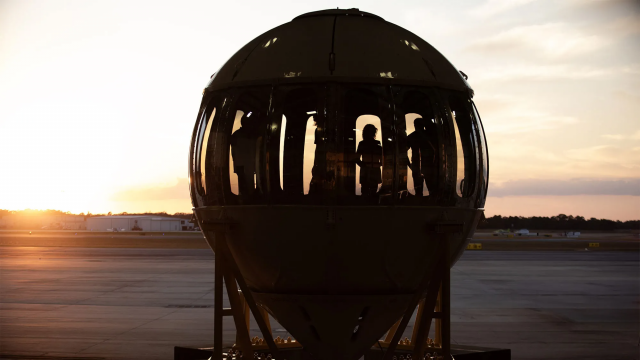Scaling space tourism
2024-02-26On Valentine’s Day, a milestone toward the democratization of space travel occurred, bringing an experience that was once considered accessible only by astronauts and billionaires into the realm of … millionaires.
Well, it’s a start. And the Feb. 14 unveiling of Space Perspective’s first test capsule, Spaceship Neptune, suggests to me that, in the imaginable future, space travel may even become an option for families that might otherwise be considering a week in Orlando.
Reality check: Space Perspective is, and aims to remain, a luxury experience. The 1,750 people who have signed on to be lifted 100,000 feet beneath its hydrogen-filled space balloons will be paying $125,000 each. Given that demand has been robust, the price may rise before it falls, though a growing competitive set may moderate pricing.
Often what begins as a luxury experience becomes more widely available once a certain level of scale is reached. And Space Perspective is indeed positioned to scale its operation. The company has built facilities to manufacture its own components, and while not exactly an assembly line operation, their idea is to have a fleet of balloons and capsules, launchable from a flotilla of customized ships (the first, Marine Spaceport Voyager, has been completed). As a result, liftoff can occur virtually anywhere in the world, and the ships can chase favorable weather conditions to increase the number of annual launches.
The decision to add floating spaceports in addition to terrestrial ones potentially also makes the experience much more varied for repeat guests. One launch could rise off the coast of Florida and see the Bahamian underwater trench known as the Tongue of the Ocean, or lift from Mediterranean and view the boot of Italy.
“The foundational experience is seeing the curvature, the thin blue line, the black sky, the sun in that black sky,” co-CEO Jane Poynter told me earlier this week. “But what you’re looking down on is really important, and the pre- and post-trip experiences can be so different.”
To help sell these experiences (and capsule seats), Space Perspective has signed preferred supplier arrangements with Global Travel Collection, Signature Travel Network and Cruise Planners, among other agency groups. Advisors have sold half of the capsule buyouts, where all eight seats have been booked for $1 million.
Given that the capsule involves technologies that had not previously been applied to scalable human spaceflight, a good portion of our conversation centered on safety. I asked whether there had been a dip in bookings following the tragedy involving another tourism enterprise that ventured where few had gone before: the implosion of the OceanGate submersible Titan.
After it went missing in June, Poynter said her company did not get any requests for refunds, though two customers called to ask about safety: “One of them was an engineer, and it was a great conversation.” Safety questions are legitimate talking points, she acknowledged; in fact, she seemed to welcome a discussion that drew considerable contrast between OceanGate’s approach and Space Perspective’s.
Whereas OceanGate CEO Stockton Rush adopted the persona of a rule-breaking maverick visionary who resisted certification and used composites untested in submersibles, “we embrace regulation,” Poynter said. “We are regulated by the Coast Guard and the FAA’s Office of Commercial Space Transportation.”
Also, both Poynter and her husband, co-CEO Taber MacCallum, have been involved in human spaceflight for more than 35 years through their Paragon Space Development Corp., which patented technologies used “on the International Space Station and every single human spacecraft orbiting the planet and operated by Americans,” Poynter said.
“The balloon that we’re using has been flown over 1,000 times in the last 20 years, and there hasn’t been a single in-flight incident,” she said. “It’s a very well understood legacy technology. We specifically made the capsule the size and weight that we did because it’s not pushing the technology.”
Spaceship Neptune is a test capsule that will not carry commercial customers and has none of the luxury fixtures that will be part of the tourism experience. But its technology is identical to capsules that will carry guests, absent a carbon dioxide scrubber that would be required for manned flight.
“We have to get through safety gates” before customers are flown, Poynter said. “We’re flying instruments that can tell us exactly what’s going on with every aspect of the vehicle. It will be dropped from space to make sure that all of the backup systems work flawlessly. We’ll be doing approximately 10 uncrewed flights and, roughly speaking, four crewed ones. I say roughly because we have to get the results of each test and may have to do a couple of them over.”
As someone who had been scheduled on the Titan to dive down to see the wreck of the Titanic last May, I say hallelujah. I’ve learned a lot about how to better assess risk since then, and Space Perspective’s approach is certainly reassuring. In fact, the contrast between the two approaches couldn’t be more dramatic.
Courtesy of Travel Weekly


